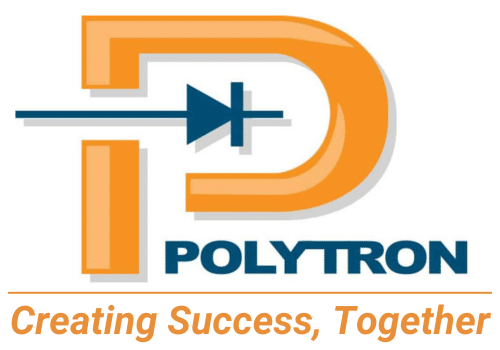To meet market demand, a global chemical producer needed to increase flexibility and add manufacturing capabilities due to obsolete control systems and technology.
Without incurring enormous costs and risks, the plant manager needed to address legacy process systems with multiple modifications and upgrade the plant to operate with current technology.
To upgrade the plants control system, all necessary changes were identified and vendor requirements were determined. The HMI, Historian, and reporting systems were setup to meet the changing market demand and growing business. Enhanced PLC functionality provided visibility into plant operations and the availability of real-time tracking and reporting. Custom batch reporting enabled development for a history of production. Project startup was completed on schedule, and the system ran saleable product on the first batch runs.
Challenge |
Solution |
Results |
| Lack of flexibility and manufacturing capability were hindering plant’s ability to meet market demand. Addressing the challenge meant dealing with a legacy process system with multiple modifications, making project scope somewhat unpredictable. | Set up HMI, Historian and reporting systems
Customize HMI system Install 2 new servers to host 3 virtual machines Install networking and cybersecurity protections Enable electronic production tracking |
System was in production and running saleable product on first batch runs
Plant now has the flexibility to support growth for years to come |
The Project

Obsolete Control System
Operating a high production facility with an obsolete control system makes for a risky environment. Trying to meet customer demand, the plant manager at a global chemical producer with 30-year-old technology faced numerous challenges:
- Increased flexibility and added manufacturing capability was needed
- Parts for the control system were hard to find or simply unavailable from the technology vendor – or even the gray market
- The operating system was also out of date, making the plant increasingly vulnerable to viruses and cyberattacks
The obsolete equipment and the lack of support and personnel skills meant the plant manager and his team were very busy managing the risk of unplanned downtime.
Adding to the stress was the inability of the plant to manufacture additional products planned for the market, which meant missing sales and growth opportunities. He knew something had to change, but addressing the issue presented challenges of its own:
- Legacy process system with multiple modifications meant the scope of the project was somewhat unpredictable
- Electrical modifications to support the process system and dated electrical drawings did not capture the modifications
- Old communication system
Could the plant be upgraded to operating with current technology without creating enormous cost and risk?
A Partner in the Journey to Modernization
The chemical plant chose Polytron to support the plant manager in upgrading the plant’s control systems. The engagement started with creation of a Definition Design Plan (DDP) to help identify all necessary changes and determine technology vendor requirements, including:
- Long-term availability of hardware and software which is a critical feature of technology that ensures long-term support for hardware and software, increasing the flexibility and stability of overall production performance.
- Initial cost and support cost impacting the overall return on investment for the manufacturer over the life of the system.
- Availability of qualified engineers to support the control system to dramatically ease the demands of maintenance, repair and future flexibility needs.
By identifying these key requirements, the DDP pointed the way to the optimum technology vendor, a single-source suite of technology and software to make one coherent PLC and HMI control system.
The project also required a turnkey system including project management, design and startup services, all hardware and software as well as contracted demolition and installation services throughout the execution phase of the project.
Setting up HMI, Historian and Reporting Systems for Growth and Flexibility
The manufacturer wanted to ensure that as business grows and their market changes, that HMI, Historian and reporting systems could expand to meet future demands.
Process system implementation involved upgrades to three main areas:
- Control panel: Polytron designed a new backplane for the PLC cabinet to fit into the existing enclosure. Terminal strips were designed in the new panel so that the old field wires could be lifted and would land in the approximate location of the previous connection.
- PLC system: The new control and IO system provided a common control engine with a common development environment, all communicating over an Ethernet network.
- PLC software: Polytron standardized the engineering and design framework for PLC programming. Now, library of process objects create consistency in all process and batch control elements, while PLC software libraries improve operator performance with an intuitive design environment. Alarms and event-based alarms enable searchable alarms and events and provide the details needed for faster diagnosis and correction of production issues.
The new PLC program provides monitoring and control of each device:
- Digital and analog sensors
- Discrete and analog valves
- Tank levels
- Motors: fans, pumps, blowers
- PID control
- Interlocking of equipment increased advanced visibility into the interlocking conditions
- Sequence control of batch recipes for products in reactors
- New batch tracking
Results
Enhanced PLC functionality provides more visibility into plant operations and the availability of real-time tracking and reporting. The custom batch reporting enables development for a history of production.
Customizing the HMI System
New thin client computers communicate over Ethernet to the HMI servers, easing management of software upgrades, security, and password management. Plus, thin client configuration increases reliability and equipment life by reducing server exposure to the harsh manufacturing environment.
The old HMI system was replaced with updated software that utilizes a standardized library of icons. The new HMI system that is easier to read, understand and manage. Standardized alarming structure was applied, and events-based alarms were implemented for ease of use and response.
The new system performs the following control system monitoring and control functions:
- Graphic overview of process areas
- Control and monitoring of devices such as valves and motors
- Monitoring of devices such as level, temperature and pressure sensors
- PID loop monitoring and control
- Reactor recipe sequence control
- Alarm summary/history
- Trending of real time and historical data
Servers, Networking and Cybersecurity
Two new host servers were installed in a new server rack in the control room and host three virtual machines using cloud computing virtualization platform. Ethernet networks were used to control and monitor the system, and an Ethernet switch provided Level 2 communications to segregate network traffic between Level 3 and 2. Three levels were implemented:
- Level 1 – PLC IO
- Level 2 – HMI, PLC, thin client, Historian and reporting
- Level 3 – Reporting and trending access from the corporate network
Segregation and distribution of network traffic improves security, provides ease in maintenance and the ability to expand.
Electronic Production Tracking with Historian
Prior to the project, no electronic history was easily accessible. Historian software now provides visibility into HMI trending, reporting and system diagnostics and enables resolution of complex interactions and expansion across the plant for future projects.
Historian reporting software allows the client to generate, display and publish custom reports via Web server to any plant computer with server access, including product batch reports, alarm frequency report, and process variables report. Data is available on multiple devices, delivering the right data to the right person at the right time.
Project Success
The project started up according to the 10-day retrofit and startup schedule defined by the client and Polytron. The system went into production and was running saleable product on the first batch runs.




